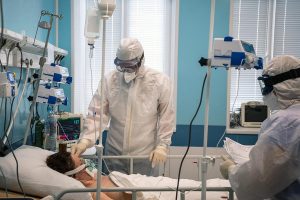
If you’re one of the millions of Americans walking around with a new knee or hip, your odds for an infection in that joint rise if you ever have to undergo cancer chemotherapy, researchers report. “Given the number of people of receiving total joint replacements each year, as well as the cost both physically, emotionally and financially for those who develop an infection and may need subsequent treatment, we need to understand what factors may increase the risk for postoperative infections,” said study author Dr. Janet Conway. She’s an orthopedic surgeon at the Rubin Institute for Advanced Orthopedics, and is also head of Bone and Joint Infection at Sinai Hospital in Baltimore. Her team tracked outcomes for over 17,000 patients who had undergone total knee replacement, total hip replacement or total shoulder replacement. They looked at people who’d also undergone chemotherapy within a year of their joint replacement surgery. Undergoing chemo appeared tied to a higher odds for an infection in the joint that had been replaced, the team found, compared to folks with new joints who had not undergone chemo. “We became curious about the potential effects of postoperative chemotherapy and the risk of joint infection as we saw cases in our own joint replacement patients,” Conway explained in a Sinai Hospital news release. “To our knowledge, this is the first study to comprehensively… read on > read on >





























-300x200.jpg)







-300x169.jpg)
